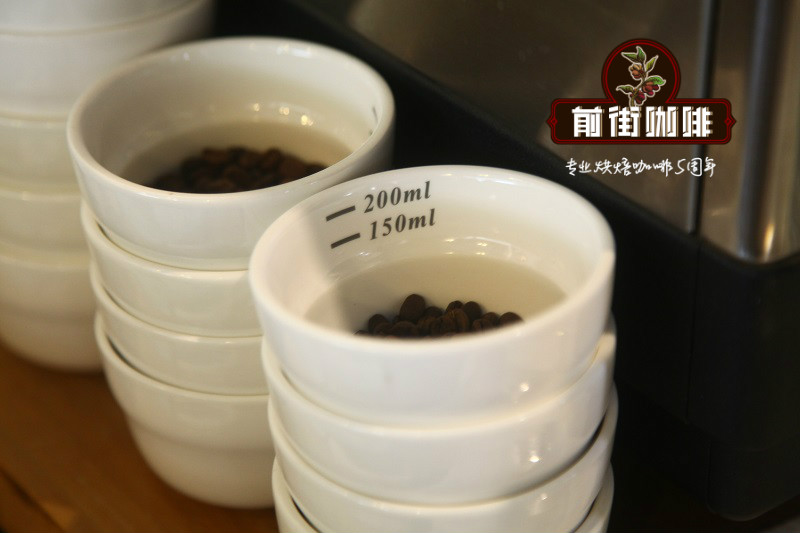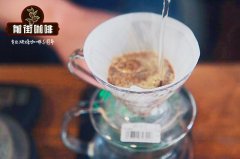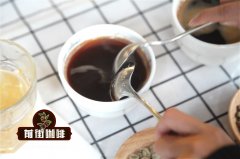How to flush out the flavor of hand-brewed coffee? what if it is very light and has no flavor?

Professional coffee knowledge exchange more coffee bean information please follow the coffee workshop (Wechat official account cafe_style)
Hand-brewed coffee (pour over) can be said to be the most basic and simple way of brewing fine coffee. There are no complex machines, just hot water, filter and coffee. A cup of fresh coffee can be made in just three minutes.
Hand brewing is also the most exciting part of boutique coffee, by adjusting the different parameters of brewing, including: grinding degree, water temperature, water speed and time, enough to change the final taste of coffee. This article will introduce the basic concepts, so that you can have enough knowledge to start making the first cup of hand-made coffee after reading this article.
Starting with grinding, coffee beans have to be turned into coffee powder before they can be converted into a cup of coffee. There are mainly two kinds of grinders (bean grinders). One is to "split" coffee in a random way by rotating the blade at a high speed. The other is to grind the coffee beans systematically in the middle of the plate by turning two cutters. Some of these theories will not be discussed in detail here, now just keep in mind that fine coffee will only use the latter-cutter-type, taking its controllability and high average degree.
The roughness of grinding will affect the extraction of cooking. By adjusting the empty loophole between the two cutters, the finer the empty loophole, the smaller the powder. The finer the powder, the larger the area where hot water can come into contact with coffee. Hand flushing usually uses medium to young powder, probably between young salt and crude salt. Don't be too nervous about how to reach the right age. Learning to make coffee is actually learning to adjust your hands with your sense of taste. As long as you learn the theory well, you will know how to adjust it later.
After you have coffee powder, the next step is to prepare hot water, the temperature of which will affect the taste of pulled coffee. To simplify this article, set the temperature between 85 and 90 degrees to make your first cup of coffee. In the future, I will write another article to talk about the relationship between temperature and taste.
With coffee powder and hot water, we can pull out the aroma of coffee beans and turn them into our favorite coffee drinks. Coffee powder should be filtered to separate coffee from powder. Different filter designs have their own requirements for falling into the water, and under different requirements, the goal is to achieve the average taste of coffee powder.
The most common filter cup of boutique coffee is the Japanese Hario V60, V-shaped filter paper, which falls into the cup through a large water hole. The special type is a high degree of control, and the user can change the acquisition characteristics by changing the strength and direction of falling into the water. To get a cup of good coffee with V60, it is necessary to accumulate some experience and fully understand the effect of each cooking parameter on taste. We do not recommend new friends to self-study V60, because the road is more rugged than other filter cups.
For beginners to make coffee by hand, using a fine-hole filter cup can have a higher buffer space for mistakes. Because in the design of the filter cup, it has been calculated to use the pore size to limit the flow rate. Kalita Wave, which we recommend for new friends, belongs to this category.
V60
Common Hario V60 filter cup
Kalita wave
Recommend self-taught Kalita Wave for hand-brewing coffee
No matter which kind of filter cup is used, it usually takes 2-4 minutes to fall into the water. Falling into the water can be divided into two parts. the first step is to wet all the coffee powder with the least amount of water, then wait for about 30-60 seconds to let the carbon dioxide out of the coffee powder. This step is blooming. Loren is to replace the space occupied by carbon dioxide with water in order to fall into the water in the second part and pull out the flavor of the coffee.
The closer the fresh beans are to the baking date, and the deeper the fried beans are, the more bubbles will come out.
The second part falls into the water, what you need to learn is a stable technique (consistency). Time and water are the most important parameters, so hand-brewed coffee is generally recorded by electronic scales and timers. A simple example is that the current use of 2 minutes, 200ml water, 15g powder flushed out of the coffee is too sour and light, the next time you can use a longer time, and more water to adjust the taste.
There are many different theories of hand-brewing coffee, especially the method of falling into the water of V60. But for beginners in fine coffee, these theories are often prohibitive to fine coffee. In fact, hand flushing can be very simple, using prefabricated ear bags is also a kind of hand flushing. The most important thing is to let our tongues judge, not to have that graceful skill when making coffee. One thing is certain, that is, good coffee beans are ready to grind, and the coffee produced is quite different from that of commercial coffee.
Important Notice :
前街咖啡 FrontStreet Coffee has moved to new addredd:
FrontStreet Coffee Address: 315,Donghua East Road,GuangZhou
Tel:020 38364473
- Prev

What is the relationship between Yemeni mocha coffee and mocha? can Yemeni coffee be made into fruit tea? Yemen is unique.
Professional coffee knowledge exchange more coffee bean information please follow the coffee workshop (Wechat official account cafe_style) Coffee is a drink made by roasting the seeds of several evergreen shrubs. The most common source of coffee is COFFEA. Robusta coffee is one of the more bitter, this plant is resistant to coffee leaf rust (camel spore rust vastatrix). There is a super in the world.
- Next

The question of the thickness of hand-made coffee powder is how many degrees of gouache and what is the ratio of gouache to water
Professional coffee knowledge exchange more coffee bean information please follow the coffee workshop (Wechat official account cafe_style) hand-brewed coffee is really great! You can watch the flow of water stay gracefully, while a good coffee is like a crystal-clear liquid, and the best thing is that anyone can make it at home. But it looks great, but it's not as simple as it looks, except for the usual water temperature.
Related
- Beginners will see the "Coffee pull flower" guide!
- What is the difference between ice blog purified milk and ordinary milk coffee?
- Why is the Philippines the largest producer of crops in Liberia?
- For coffee extraction, should the fine powder be retained?
- How does extracted espresso fill pressed powder? How much strength does it take to press the powder?
- How to make jasmine cold extract coffee? Is the jasmine + latte good?
- Will this little toy really make the coffee taste better? How does Lily Drip affect coffee extraction?
- Will the action of slapping the filter cup also affect coffee extraction?
- What's the difference between powder-to-water ratio and powder-to-liquid ratio?
- What is the Ethiopian local species? What does it have to do with Heirloom native species?

